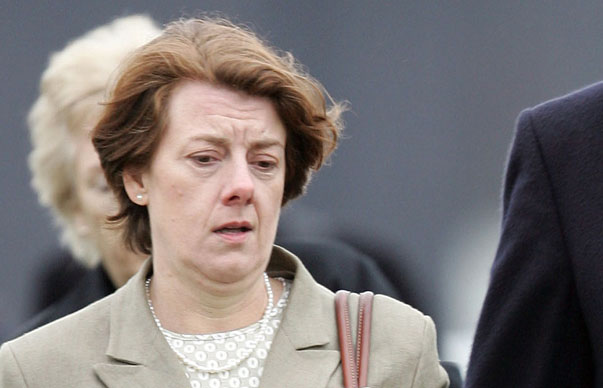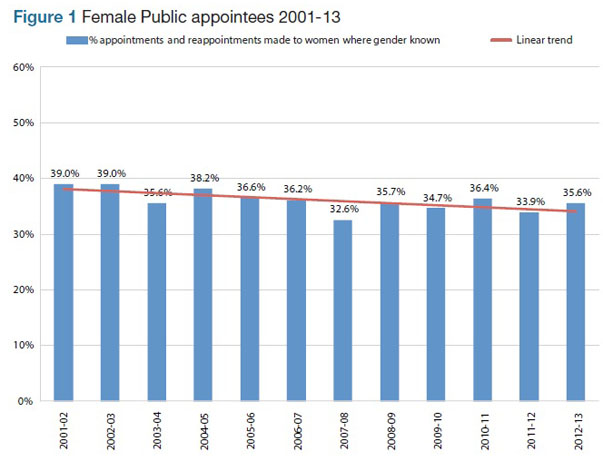 “Many rightly see this as an emerging pattern of behaviour in Whitehall with non-Conservative supporters being replaced by prominent Conservatives.”
“Many rightly see this as an emerging pattern of behaviour in Whitehall with non-Conservative supporters being replaced by prominent Conservatives.”
Michael Dugher MP, Shadow Minister for the Cabinet Office, 3 February 2014
The background
Sally Morgan has been sacked as chair of the schools inspectorate Ofsted, but she’s not going quietly.
That’s Baroness Sally Morgan to you, not “Britain’s best-loved psychic”, who shares the same name. Baroness Morgan happens to be a Labour peer, and the bookies’ favourite to replace her is Theodore Agnew, a major Conservative Party donor.
This has provoked accusations that the Conservative-led government is packing non-governmental organisations with loyal placemen.
Labour MP Michael Dugher has written an angry letter to the cabinet secretary, Jeremy Heywood, saying: “Many rightly see this as an emerging pattern of behaviour in Whitehall with non-Conservative supporters being replaced by prominent Conservatives, including major donors, to powerful public-sector roles to support the Government’s political agenda.”
More than one commentator has suggested that the last Labour government were the past masters at staffing quangos with political appointees. But what are the facts?
The analysis
Baroness Morgan was actually appointed by the Conservative education secretary, Michael Gove, in 2011. The man tipped to replace her is indeed a Conservative donor, giving the party £144,000 between 2007 and 2009, according to the Electoral Commission.
Does that mean he has bought himself the job? Probably not. Mr Agnew is also a non-executive director at the Department for Education and chairman of the board that oversees the Academies programme.
Theoretically, it should be impossible for a rich donor who lacks the right experience to buy an appointment to a public body, because the Commissioner for Public Appointments is supposed to ensure jobs are dished out “on merit following a fair and open competition”.
Jobs have to be advertised publicly, then candidates are shortlisted after being pre-screened by a panel who are supposed to make sure they have the right competencies. Ministers in the various government departments then have the final say on who is appointed.
Labour points out that other Conservative supporters have bagged jobs at quangos recently.
Andrew Sells, another Tory donor, was made chairman of Natural England. Ex-Tory MP David Prior was made chairman of the Care Quality Commission last year, and Conservative peer Baroness Hanham became interim chair of health sector regulator Monitor last month.
A number of other heads of public bodies have been replaced recently too, but we have to be careful not to jump to conclusions about the political allegiance of the newcomers.
Labour appointee Dame Liz Forgan was asked to leave her post as head of the Arts Council in 2012 and replaced by Sir Peter Bazalgette, who as far as we know has never declared his political colours.
Labour peer Baroness Kay Andrews was replaced by Sir Laurie Magnus at English Heritage and Labour Party member Dame Suzi Leather was replaced by William Shawcross as chair of the Charity Commission.
As far as we are aware, neither man is on record as an active member of the Conservative Party, although Mr Shawcross has said that he votes Tory.
This is far from an exhaustive list of all the comings and goings at the more than 300 non-governmental organisations covered by the Commissioner for Public Appointments, and it may be that the press reports we’ve picked up on only tell one side of the story.
Number 10 points out that Simon Stevens, the incoming chief executive to NHS England, is a former special advisor to two Labour health secretaries.
The government also asked ex-Labour cabinet ministers to carry out high-profile policy reviews, notably Alan Milburn on social mobility and John Hutton on public service pensions.
The big picture
A handful of cases may not provide strong evidence of a pattern, but there are figures that attempt to show the changing political sympathies of the whole quango class.
The Commissioner for Public Appointments keeps records of the political activity of people appointed to positions in public bodies each year.
“Political activity” means more than just voting. It covers things like holding office in a party, standing for election or speaking publicly on behalf of a candidate.
We can break down the people who said they were politically active into Conservative, Labour and Lib Dem. Here’s how the percentages change over the last ten years:
These figures were quoted by Fraser Nelson, the editor of the Spectator, in a recent blog post. He used them to demonstrate how Labour activists had been massively over-represented on quangoes throughout the party’s time in office.
In 2006/07, for example, nearly 70 per cent of people who admitted to political activity were Labour loyalists.
He also points out that the pendulum did not swing in the other direction after the Conservative-led coalition came to power: Labour supporters still outnumbered Tories in 2010/11.
But Mr Nelson doesn’t quote the latest two years of figures, which may provide some evidence of a belated swing in the opposite direction.
In 2012/13, the Conservatives were ahead for the first time. Only about 40 per cent of people who describe themselves as political active were Labour, while 45 per cent were Tories.
Fraser Nelson says “many ex-Labour staffers have since declared themselves to be neutral”, which if true would make the latest figures unreliable, but really we have no idea what people are doing when they fill in the forms that feed into these stats.
Last year the percentage of people who admitted to political activity fell to just 9 per cent, one of the lowest numbers in the series. In 2001/2002 it was 20 per cent.
Could it be that people are becoming reluctant to confess to their true political leanings? Are people reluctant to admit to being Labour loyalists because they fear for their job prospects? We don’t know.
Men and women
The figures are more reliable when it comes to gender, another issue that has been raised in recent days, and to ethnicity.
Labour’s deputy leader Harriet Harman said at the weekend: “My concern is we have a cull of senior authoritative women and they are all being replaced by men.”
This looks pretty accurate, according to the changes in personnel we know about, and figures from the Commissioner for Public Appointments:
Note that there is a trend of gentle decline in the number of women public appointees. Note also that this decline began when Ms Harman’s party was in power, and has continued under the current regime.
The trend for black and ethnic minorities appointees is similar:
The verdict
The Commissioner for Public Appointments figures are probably our best chance of getting a handle on the political sympathies of the quango class.
If the stats are to be believed, Labour loyalists have tended to dominate public bodies, and that did not change immediately after the coalition came to power.
But the very latest figures from last year do suggest a trend of increased representation for Conservative activists.
So Sally Morgan may be right to say that her exit is part of a pattern. But the long view suggests that the Conservatives are simply following a trend of promoting their own sympathisers which began under Labour.
Similarly, the fall in the number of ethnic minority and women appointees is evident under the last government and this one.
The real FactCheck verdict is: “A plague on both their houses.”







